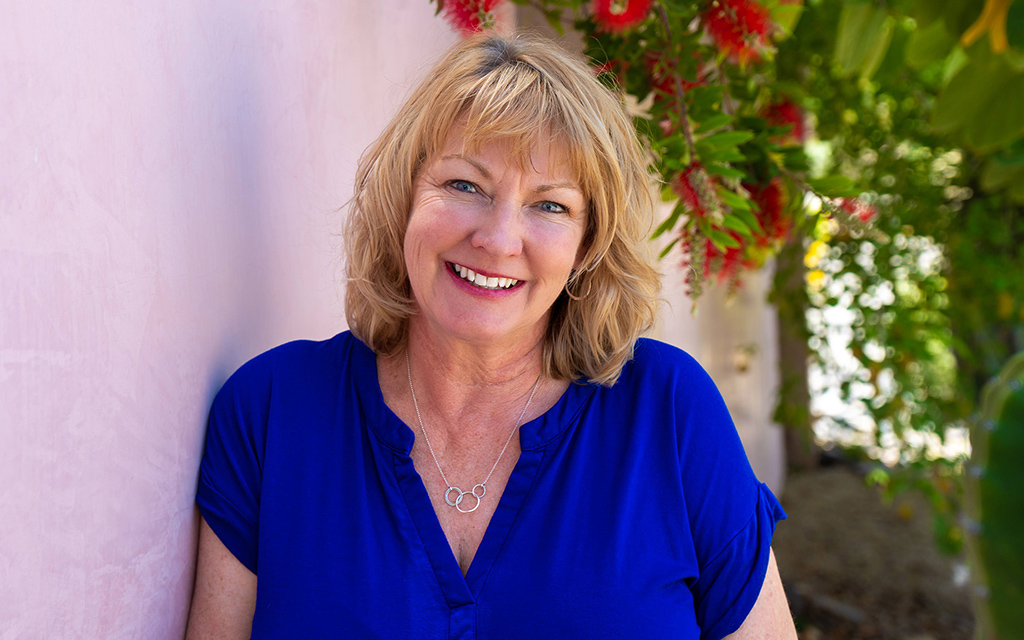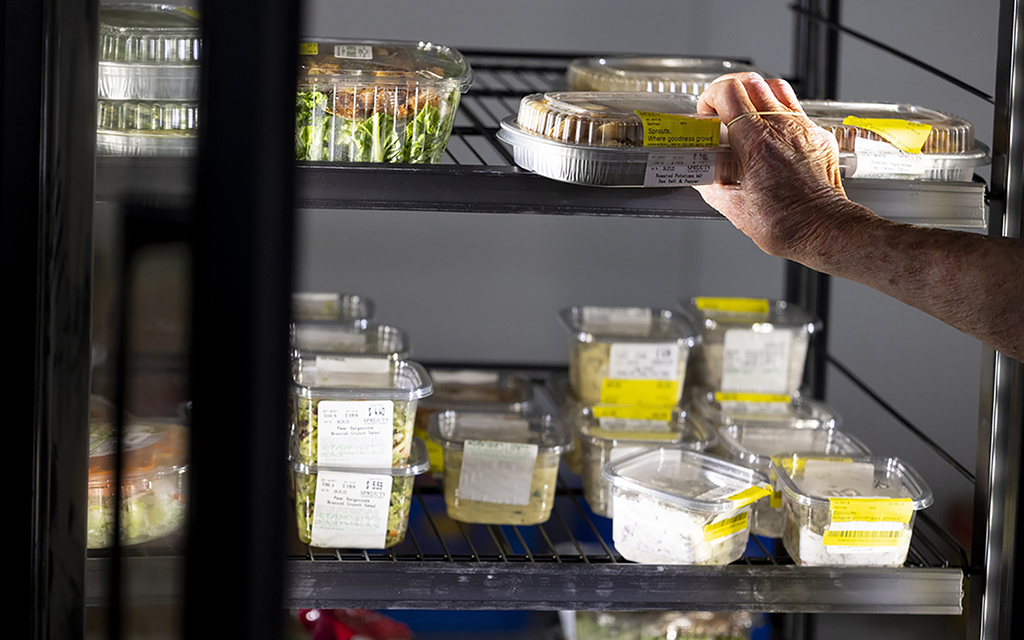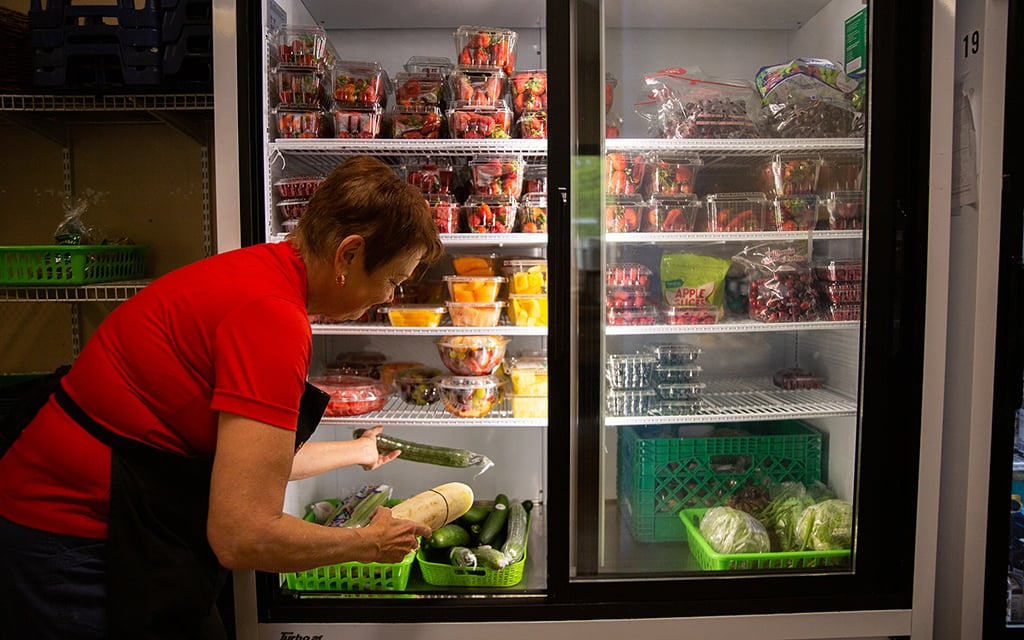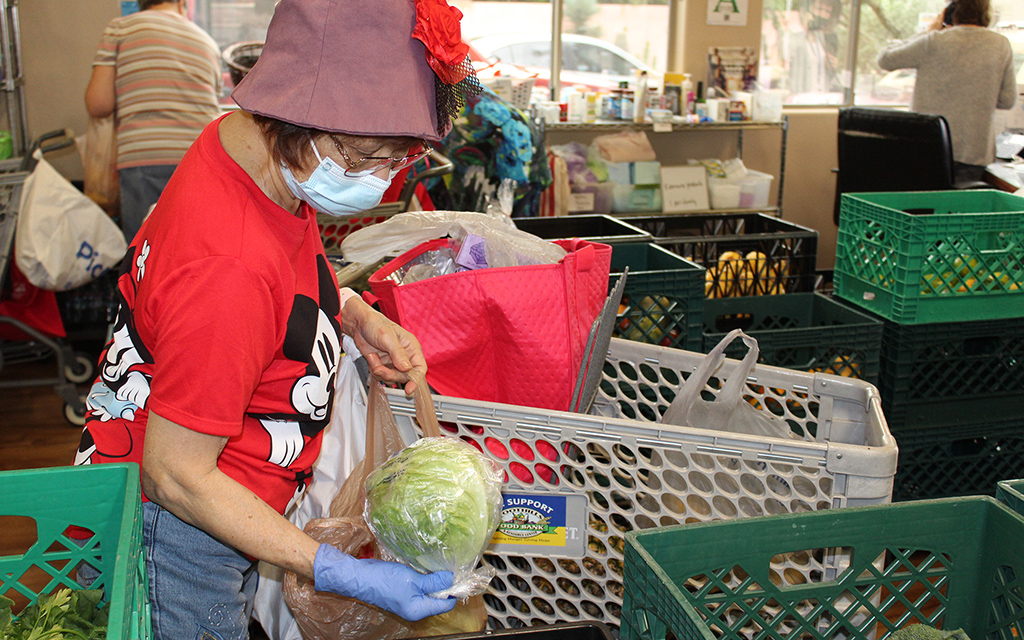PHOENIX – Two Valley food banks are reimagining their pantries to help seniors hit hard by inflation, expanding beyond traditional food boxes to offer market days, healthy meals served in group settings, breakfast and takeout options. Their leaders know nutritious meals support overall health and wellness.
The threat of hunger is acute in Arizona, which ranks 32nd in the nation for food insecurity among seniors. Last year, 12.8% of seniors in the state dealt with food insecurity, which is defined as someone who has had insufficient access to food to meet their basic needs in the past 12 months. The national average for seniors is 11.9%, according to America’s Health Rankings from United Health Foundation.
Banner Olive Branch Senior Center in the West Valley and Foothills Food Bank and Resource Center in the north Valley offer a variety of food programs and other resources, but their biggest growth has been in assisting at-risk seniors.
At Foothills Food Bank, 37% of those served are 55 years old and older. It’s also the food bank’s fastest-growing demographic, making up 53% of new clients in 2022. Its Senior Market Monday helped 1,914 seniors last year and food bank volunteers delivered 147 boxes to seniors at their homes. The center serves a wide swath of area in the north Valley that includes 300,000 residents and 15 ZIP codes in Cave Creek, New River and Black Canyon City.
Leigh Zydonik, Foothills executive director, attributed higher food costs to the influx of new seniors seeking help.
“We think inflation is really hitting those on fixed incomes, and many weren’t prepared for this,” she said. “So it comes down to, ‘Do I pay rent or do I pay for my medicine or buy food?’ If we can provide food, it frees up some income for them to pay some of those other bills, just to help them either get ahead or keep their head above water.”
Foothills has been inundated with new clients requesting services. From 2021 to 2022, it had 48% more visitors; this year, it has seen a 43% increase in total visitors.
The food bank tries to make sure it has senior-friendly options such as individual-sized cans that are easy to open, low-sodium and low-sugar foods, healthy options, dried fruits and fortified cereals.
“It’s a great social hour,” Zydonik said of the Monday market day, adding that they also offer fresh produce, fresh bakery and deli items, dairy and meat.
Walter Sbarra is a familiar face at the Olive branch center in Sun City. He takes advantage of meal programs there, but thrives on the socialization aspect at the center.
“I meet a lot of people here,” Sbarra said. “It’s good socializing. The food is good. The pantry is good. It’s available, and I enjoy it.
“It’s like a family after a while. You get to know people of different cultures, of different areas where they live. They say, ‘I’m from Chicago. I’m from St. Louis.’ It’s interesting to hear what they say about their hometown.”
The center at 13049 N. 103rd Ave. in Sun City offers five food programs: a pantry where members can visit five days a week and take home a bag of free groceries, home-delivered meals, group meals served in the center’s dining room, a takeout program and breakfasts on Tuesdays and Wednesdays. It is open weekdays from 8 a.m. to 3 p.m.
In addition, the Olive branch has a benefits review program where staff will help seniors identify services they may qualify for, such as the Supplemental Nutrition Assistance Program.

The Banner Olive Branch Senior Center prides itself on offering not just food, but socialization for seniors that can help with their mental health. (Photo courtesy of The Banner Olive Branch Senior Center)
Health effects of food insecurity
Those who work with seniors know food insecurity is a slippery slope that can cause them to deteriorate mentally and physically. The National Council on Aging links food insecurity to lower nutrient intakes like protein, vitamins A and C, calcium and iron. It says seniors who are food insecure are 65% more likely to be diabetic and are more likely to suffer chronic conditions such as high blood pressure, asthma, obesity, gum disease and congestive heart failure.
Worrying about where your next meal is coming from can take a toll on a person’s mental health as well. A study in Public Health Nutrition showed a connection between food insecurity and depression.
“We know that eating a healthy meal really does support your overall health and wellness,” said Dawn Gielau, director of the Banner Olive Branch Senior Center. “We worry about making sure that our seniors are healthy and that they stay in their own home for as long as they want to be there. We do that by providing a variety of services that support their social determinants of health such as food insecurity.”
Zydonik, with Foothills Food Bank, agreed that food insecurity is usually a symptom of a larger issue.
“If we can help get to that root cause and alleviate some of those barriers or the reasons that they became food insecure, then we’re helping for the long haul,” she said, adding that the resource center offers workshops on nutrition, health, stress relief and managing finances.
Zydonik said they measure success if they can help a person over a rough patch and offer them resources that will allow them to remain independent.

Executive Director Leigh Zydonik said that if the Foothills Food Bank can help ease some of the reasons the clients become food insecure, “then we’re helping for the long haul.” (Photo courtesy of the Foothills Food Bank and Resource Center)
“The majority of folks do not need us that long. They just need that bridge, that little thing of emergency and they can go off on their own and that helps them with their dignity,” she said. “To me, that’s really exciting.”
According to Zydonik, 54% of the food bank’s clients used its services for less than two years; 2% of the clients use the service weekly and 8% use the service monthly.
Gielau recounted a touching letter the Olive branch received from a grateful senior.
“The letter said, ‘I never thought I would ever need services like this until I found myself in a situation where I didn’t have as much income as I once did and my health was failing. And I now understand the importance of the food programs and the food pantry,'” she said. “So when you hear those success stories, it warms your heart because the work is hard, but it’s all well worth it when you know that you’re really touching lives and you’re helping people.”
Need has prompted expansions
Banner Olive Branch moved into a new 25,000-square-foot space in April, almost three times the size of its previous facility. The extra room includes a dining room that seats 208 people, a larger pantry and kitchen, a dedicated room for chair exercise programs, a movie room and a dedicated meeting space for Medicare benefits counseling, legal assistance, tax preparation help and other programs.
Foothills Food Bank is in the midst of a capital campaign with plans to build a new facility double the size of its location at 6038 E. Hidden Valley Drive in Cave Creek. Zydonik said they currently have three community markets, three mobile markets, seven micro-pantries that are in four schools, two libraries and a YMCA. Hours at the food bank in Cave Creek are 9 a.m. to noon Tuesday through Friday, 5:30 to 7 p.m. Tuesdays and 9 a.m. to noon Mondays for Senior Market Day.






